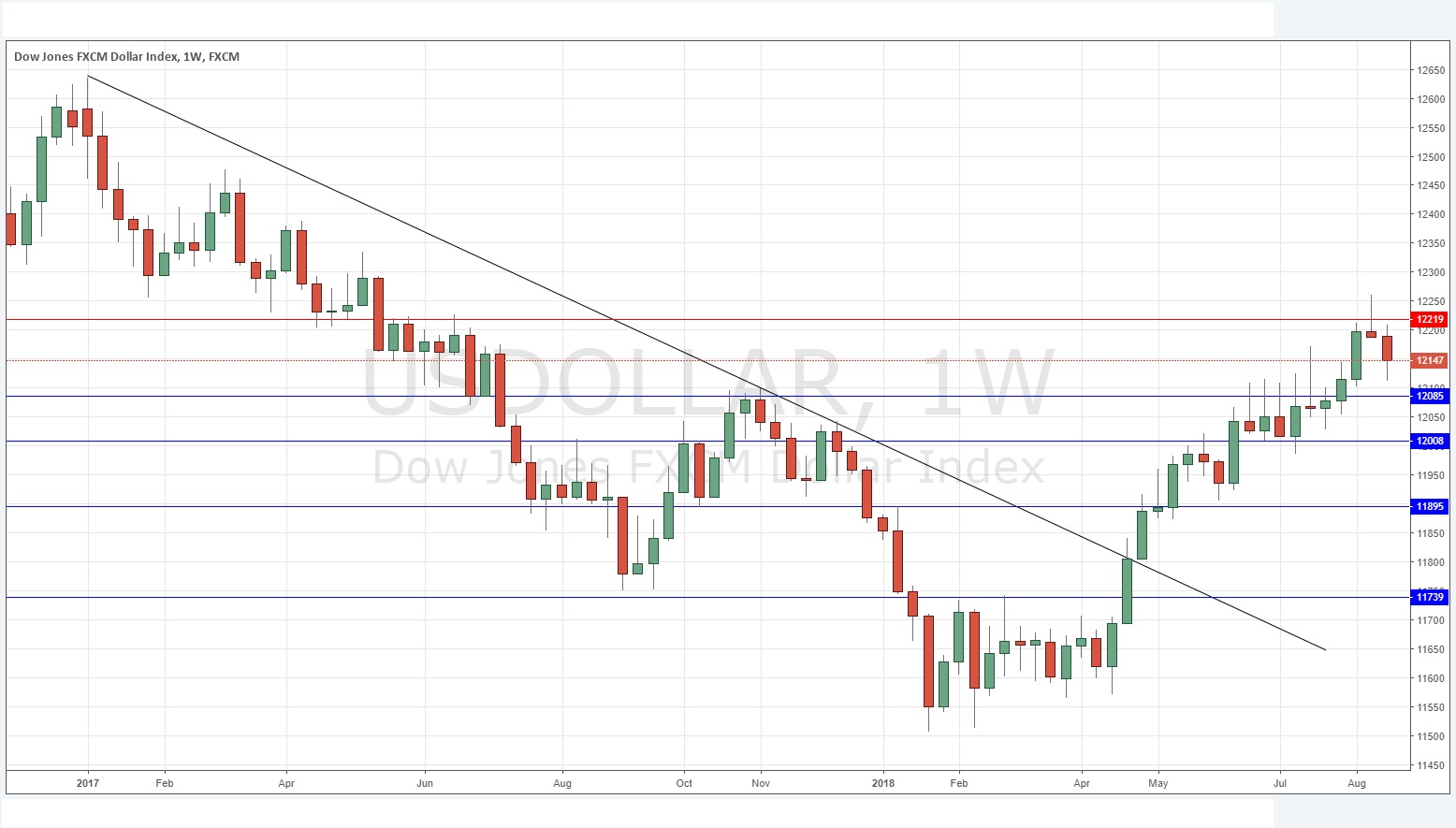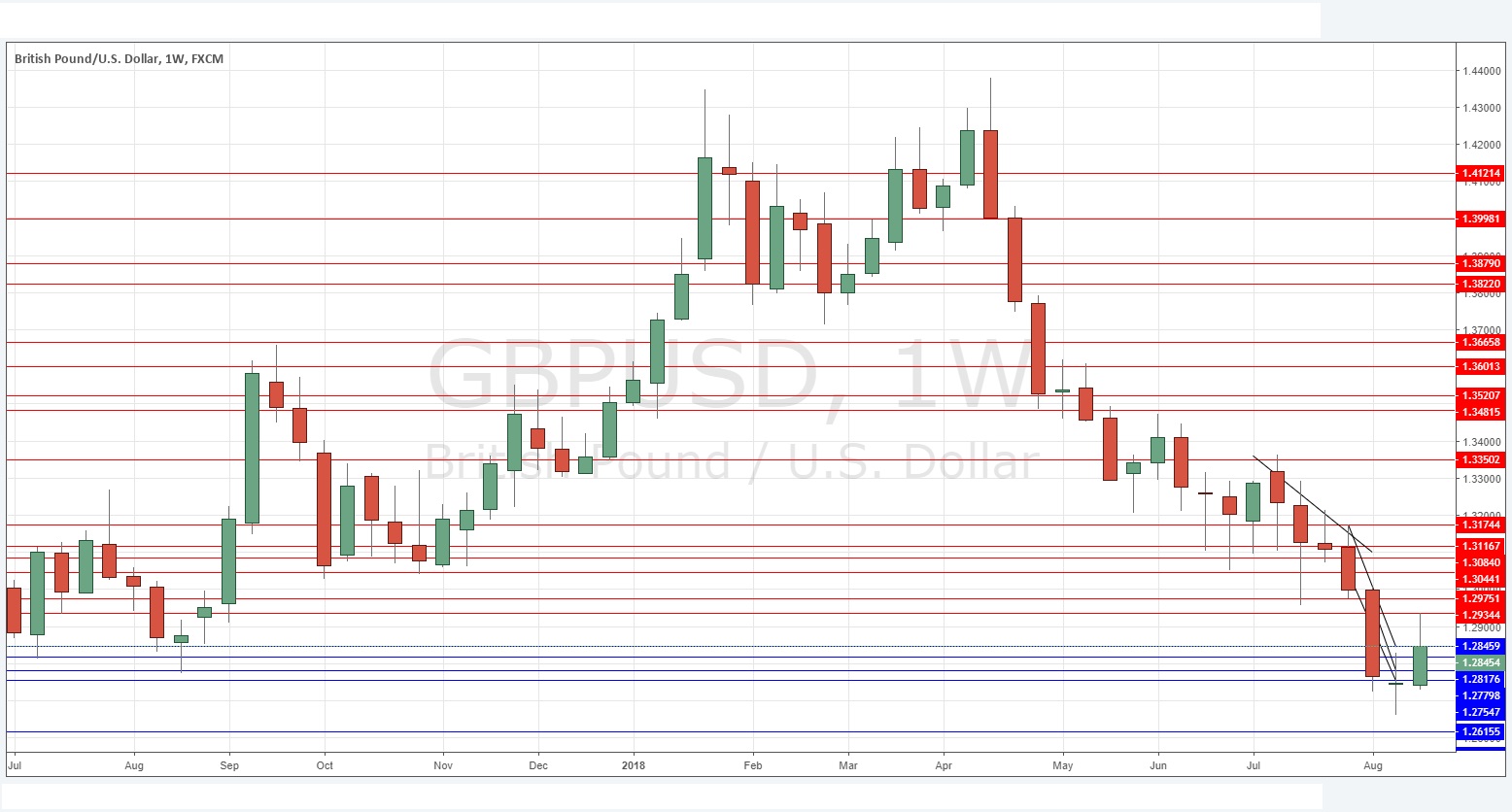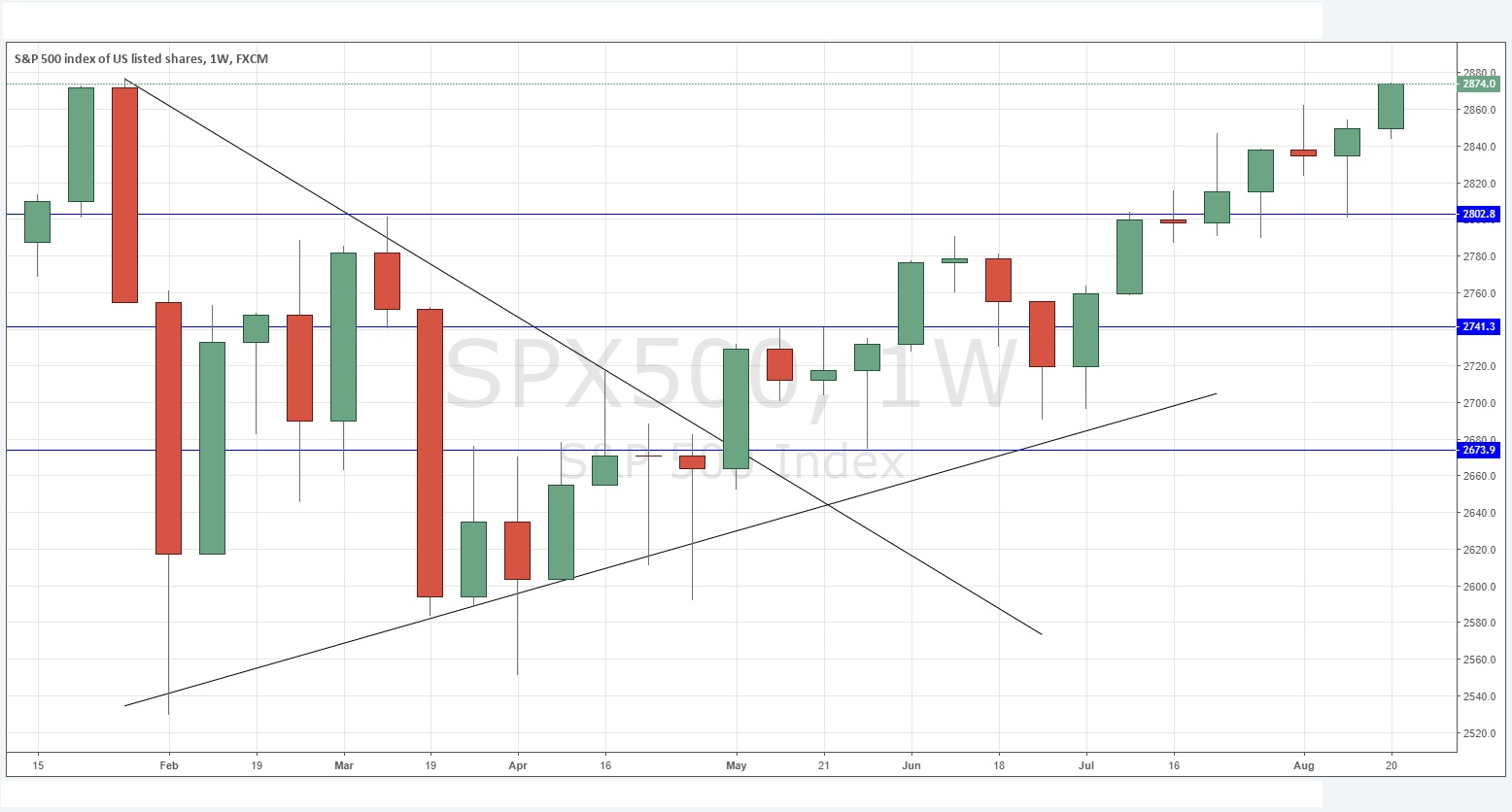The difference between success and failure in Forex trading is very likely to depend upon which currency pairs you choose to trade each week, and not on the exact trading methods you might use to determine trade entries and exits. Each week I am going to analyze fundamentals, sentiment and technical positions in order to determine which currency pairs are most likely to produce the easiest and most profitable trading opportunities over the next week. In some cases it will be trading the trend. In other cases it will be trading support and resistance levels during more ranging markets.
Big Picture 26th August 2018
In my previous piece last week, I forecasted that the best trades would be short GBP/USD, and bullish on the S&P 500 Index above last week’s high price. These trades finished indifferently: while the GBP/USD rose by by 0.77% the S&P 500 Index also rose by 0.70%, producing an average loss of 0.04%.
Last week saw a rise in the relative value of the Euro, and a fall in the relative value of the Japanese Yen.
Little happened in the Forex market last week, except for FOMC Meeting Minutes which contained no big surprises, and a more dovish than expected Monetary Policy Meeting Minutes from the RBA.
Fundamental Analysis & Market Sentiment
Fundamental analysis tends to support the U.S. Dollar, as American economic fundamentals continue to look relatively strong. However, sentiment and technical factors seemed to be working against the Dollar over the week and boosting the Euro.
The week ahead will probably be dominated by the upcoming U.S. Preliminary GDP data release. The coming week is likely to be a little less busy and less volatile than the past week, although if the Turkish crisis flares up again, it could be more volatile.
Technical Analysis
U.S. Dollar Index
The weekly price chart below shows that after last week’s bearish pin candlestick which rejected the resistance level at 12219, the price has continued to fall, closing below the former support level at 12158. There is a reasonably large lower wick, however, which is a sign that the price may have found some support. The Index is clearly in a long-term bullish trend. This still suggests that the outlook for the U.S. Dollar is bullish, but there is obviously reason for caution, and perhaps to expect at least a pause in any further immediate rise.
GBP/USD
This pair is technically in a long-term downwards trend, as is shown clearly by the bearish action over the past 18 weeks or so. Although we saw a bullish candlestick last week following the previous doji candlestick, this recent bullishness looks unconvincing following the sharp rejection of the resistance level at 1.2975. The candlestick has a large upper wick. I think we have a higher probability of seeing a downwards move over this coming week than an upwards move.
USD/JPY
Although the action over recent weeks has been quite tight and consolidative, last week’s candlestick was clearly bullish, and we have a bullish long-term trend which is in force again. Movement in this pair can be very constrained but trading this pair on the long side with caution may give some opportunities for profit over the coming week.
S&P 500 Index
The major U.S. stock market index printed a nicely strong bullish candlestick last week, closing right on its high price. This was a record high weekly close, which is a very bullish sign. It looks very likely that the price will go on to make a new record high after the market opens on Monday. The outlook is clearly bullish.
Conclusion
Bearish on the GBP/USD; bullish on the S&P 500 Index.





